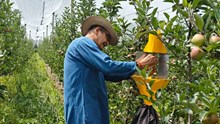
Six traditional farming systems from Brazil, China, Mexico, and Spain have been officially recognized as Globally Important Agricultural Heritage Systems (GIAHS) by the Food and Agriculture Organization (FAO). These systems, rich in biodiversity and cultural heritage, were approved during the GIAHS Scientific Advisory Group meeting held from 19 to 21 May.
With these additions, the GIAHS network now includes 95 systems across 28 countries, showcasing time-tested practices that balance food production with ecosystem preservation. China leads the list with 25 recognized systems, followed by six in Spain, three in Mexico, and two in Brazil.
Erva Mate Agroforestry – Paraná, Brazil
In southern Brazil, Indigenous and local communities have cultivated erva-mate for centuries under the canopy of the endangered Araucaria Forest. This shade-grown agroforestry system blends food crops, native fruits, and forest products, while preserving cultural practices and biodiversity.
Popularly consumed as chimarrão or tereré in South America, erva-mate symbolizes both ecological sustainability and regional identity. The system is a rare example of agriculture preserving forest cover in an area where only 1% of the original forest remains.
Deqing Pearl Mussel Fishery – Zhejiang, China
In Deqing County, farmers have practiced an 800-year-old aquaculture technique, combining mussel farming with rice cultivation and silk production. The system produces pearls while naturally filtering pollutants like ammonia and nitrogen, making it an environmentally friendly form of aquaculture.
More than 22,000 residents benefit from this integrated system, which also supports eco-tourism and environmental education.
Fuding White Tea Culture – Fujian, China
Home to the iconic Lüxueya tea tree, Fuding has nurtured a unique white tea production system for generations. This agroecological method includes tea gardens interspersed with forests, contributing to high biodiversity—including 18 tea varieties, 41 vegetables, 14 fruits, and various fungi and animal species.
Deeply rooted in local rituals and craftsmanship, the system sustains rural communities and strengthens cultural connections to the land.
Gaolan Ancient Pear Orchards – Gansu, China
Along the Yellow River in Gansu, the Shichuan pear orchards thrive in a dry, erosion-prone region using a 600-year-old "Gaotian" planting method. These towering pear trees produce over 2 million kilograms of fruit annually and are part of a resilient dryland farming system.
Integrated with crops and livestock, the orchards help conserve native species and sustain livelihoods through both traditional and processed pear products.
Metepantle Agricultural Terraces – Tlaxcala, Mexico
In Mexico’s Tlaxcala state, Indigenous Nahua communities maintain a 3,000-year-old terraced farming system, cultivating maize, agave, beans, and squash alongside wild plants. Known as Metepantle, this approach fosters seed conservation, climate resilience, and local food sovereignty.
The system protects over 140 native species, including 40 types of maize, while promoting community-based conservation through seed fairs and ancestral traditions.
Volcanic and Sea Sand Farming – Lanzarote, Spain
On Spain’s Lanzarote Island, farmers have transformed harsh volcanic terrain into fertile farmland. Using techniques like “enarenado” (volcanic ash mulching) and “jable” (sea sand layering), they grow grapes, sweet potatoes, and legumes without irrigation in one of Europe’s driest climates.
Spanning over 12,000 hectares, this system merges innovation with tradition, conserving biodiversity and supporting cultural heritage in a uniquely challenging environment.
India, known for its diverse agro-ecological zones and centuries-old farming traditions, is home to three Globally Important Agricultural Heritage Systems (GIAHS) recognized by the FAO. These include the Koraput Traditional Agriculture in Odisha, the Kuttanad Below Sea Level Farming System in Kerala and the Saffron Heritage of Kashmir.
The FAO’s GIAHS programme celebrates such systems as living examples of human ingenuity, where farming supports both nature and culture.
















